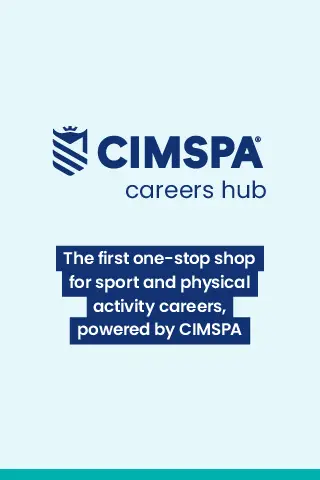How integrating weight-loss medications management into training provision can be a catalyst for your development and for greater collaboration with the health sector.
Back in October of last year, Secretary of State for Health and Social Care The Rt Hon Wes Streeting MP declared that weight-loss medications have a key part to play in tackling the UK’s growing obesity epidemic. The government firmly believes that these “life-changing” drugs can relieve some of the pressure on the NHS and boost the economy by reducing reliance on benefits and the number of sick days taken by those that are currently in employment.
Ukactive and CIMSPA then issued a joint statement following the government’s announcement to invest significantly in weight-reduction drugs such as GLP-1 agonists. The statement mirrored Steeting’s comments around exercise and physical activity being a key part of the solution but was clear in its message that this may have been a missed opportunity for those in power to invest in a full prevention strategy to benefit the health of the nation.
However, regardless of the shortcomings or long-term outcomes of this policy, it’s abundantly clear that weight-loss medication is here to stay and is more popular than ever. This is helped by the ever-increasing platform given to it by advocates of the treatment, including the government, medical professionals, the media and crucially those who have been or are currenting being prescribed these pharmaceuticals.
Plus, while previously there had been many column inches and articles written scrutinising the effectiveness of these medicines, we’re now seeing that focus shift towards which brands are providing the best results.
With this in mind, it’s never been more important to equip the sport and physical activity workforce with the skills and knowledge to not only understand what these medications do but also how to work safely and effectively with any clients using them.
This is a sentiment shared by CIMSPA’s Associate Director of Education and Careers Natasha Eason, who, since the government’s announcement last autumn, has been collaborating on CIMSPA’s behalf with multiple experts from across the sport and physical activity and health sectors to ensure that updated and effective guidance and training is available.
“We were aware of the increasing popularity of these medications and the need for our workforce to understand their impact on weight management and how they integrate into a broader approach to training and lifestyle coaching,” said Eason.
“Some professionals in our sector could easily be forgiven for seeing these drugs as an easy, quick fix or even as competition to what physical movement provides.
The reality is that when they are prescribed by qualified medical professionals and all guidelines are followed, they can have a positive impact on people’s health and wellbeing, particularly when combined with sport and physical activity.
That’s why it’s imperative for the sector’s workforce to be equipped with the knowledge to best support clients who may be using, or considering using, these medications.”
And so, following their initial, joint statement, CIMSPA again collaborated with ukactive to publish official guidance in March of this year, to aid the sector’s understanding of pharmacological treatments used for weight loss and their implications for health, fitness, and performance.
Ukactive and CIMSPA’s guidance
The guidance aims to:
- Increase awareness of pharmacological treatments, such as GLP-1 and their physiological effects
- Provide practical strategies and support for tailoring activity programme and lifestyle advice
- Highlight the importance of knowing when to refer clients to healthcare professionals
“We wanted to ensure the document was informed by evidence-based research and aligned with the sector’s professional standards for professional competence and ethical practice,” continued Natasha.
“Healthcare experts and professionals from the Royal College of General Practitioners, Bodyline Medical Wellness Clinics and All About Obesity were all consulted to produce this guidance that will assist the workforce in continuing to deliver high quality, client and participant-centred support.”
Arriving in tandem with the guidance was a new, expert-led CPD course: Navigating GLP-1 for Sport and Physical Activity Professionals. Delivered by Future Fit Training, the course is also endorsed against CIMSPA’s Working with People with Long Term Conditions professional standard.
Speaking on the benefits courses such as this can bring to clients’ health and sector professionals’ portfolios, the Associate Director added:
“It’s important to be able to add practical insights into weight-loss medications as well as evidence-based knowledge to help you gain the understanding and confidence to better support your clients. It can also help to enhance your credibility as a professional and allow you to expand your service offering.
“Moreover, as more and more clients turn to metabolic medications, it’s vitally important for sector professionals to develop an understanding of the effects that these treatments can potentially have on individuals, such as appetite reduction, muscle retention and a decrease in energy levels. These all have an impact on a client’s ability to train safely and effectively, so training plans may need to be adapted, side effects need to be managed, and lifestyle changes need to be reinforced.”

Quality-assured training
Specialised training in this area will undoubtedly become more prevalent alongside the increasing use of these medicines, so it’s important that learners look for the highest quality provision.
As Future Fit are one of CIMSPA’s three-star, ‘Enhancing’ Training Provider Partners, learners can be reassured that the training meets the highest standards.
All of CIMSPA’s endorsed products go through a quality-assurance checking process and are aligned with the sector’s professional standards to ensure that they provide the best learning experience and value to the sector’s professionals.
As CIMSPA and the sport and physical activity sector continue to amplify the role of the workforce within the health setting, the recent advancements in weight management medicine provide a perfect opportunity to showcase how the two sectors can collaborate to improve outcomes for patients. Natasha concluded:
“Naturally, we want prevention as the cure, rather than people waiting until they feel like the only choice they have is to rely on doctors, hospitals and drugs. However, for those that do need this kind of intervention, we have to make sure that we’re ready to promote and support the development of the workforce delivering in both the physical activity and health landscape. The introduction of this guidance and endorsed training ensures that we are.
“This all then feeds into that bigger picture of moving toward greater recognition of the workforce and how they are positively impacting lives and communities through safe practice and engagement. In the process, this will change perceptions of what physical activity means to health practitioners.”
More information on the ‘Navigating GLP-1 for Sport and Physical Activity Professionals’ course can be found on the new Careers Hub – the go-to resource for anyone interested in pursuing or developing their career in the sport and physical activity sector.








